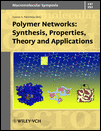Photovoltaic Loss Analysis of Inkjet-Printed Polymer Solar Cells Using Pristine Solvent Formulations
Abstract
We have recently reported inkjet-printed organic solar cells with a record power conversion efficiency of 3.5%. In this contribution, we present our first trials to process a functional active layer of a polymer:fullerene bulk-hetero junction solar cell by inkjet printing using tetralene as a solvent. Solar cells with the inkjet-printed active layer based on pristine tetralene show calibrated AM1.5 power conversion efficiency (PCE) of around 1.3% over comparable doctor bladed cells with PCE of 3.3%. Analysis in terms of one-diode equivalent circuit combined with current-voltage characteristics of the devices as a function of light intensity and voltage were performed to reveal the dominant loss mechanisms of the inkjet printed solar cells using tetralene solvent formulation. The loss analysis described in this paper helps us to identify the device performance limitations and to design methods to improve the performance of inkjet printed organic solar cells.




